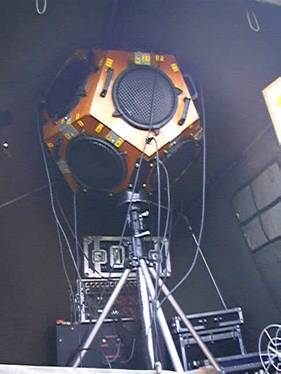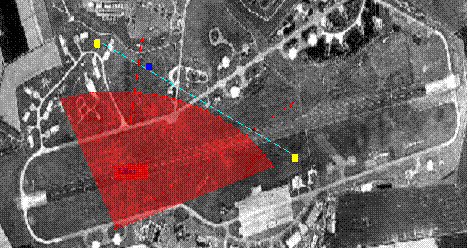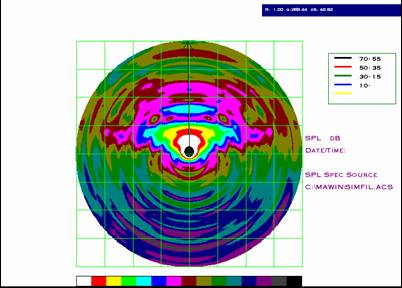Effects of Meteorology on propogation
Abstract – Honington 2001
A fundamental investigation of the effects of range-dependent meteorology on outdoor sound propagation
- Field campaigns
- Experimental techniques
- SODAR
- LIDAR
- Comparisons with predictions
- Limitations in theoretical modelling
Introduction
- Influence of weather on a particular measurement depends upon the determination of the prevailing meteorological conditions over the propagation path
- Application of research into outdoor noise propagation to practical environmental noise measurement and prediction
- Three principal mechanisms of refraction, atmospheric absorption and scattering
Schematic of Field Trial


Experimental Method: Meteorology
- Wind profiles
- SODAR
- 250 metres along array
- Doppler LIDAR
- Scanning in three-dimensions
- Radial wind velocities from a single location
- 900 metres perpendicular array
- Radar wind profiler
- 28km southeast of site
- Augment data at highest altitudes
- SODAR
- Automatic weather stations
- 2m and 10m at source and furthest position
Aerial view of bunker trial

Multi-Azimuth Parabolic Equation Predictions

Conclusion
- Meteorological changes may exert significant influence
- High-level sources and long distances
- Downwind
- Noise levels may increase by a few dB
- Depends on wind speed
- Measurement normally preferred downwind
- More conservative since deviation is smaller
- Upwind or sidewind level
- Decreases in excess of 20 dB
- Temperature gradients under with no wind
- Variations of same order as strong vector winds
Acknowledgements
- The SODAR team was led by Prof Bradley and Prof Collier led the LIDAR team
- We would like to thank D Humpheson and R Beaman of RAF Henlow, Group Captain Anderton of RAF Honington, and CL Murray of QinetiQ Malvern
- This work was kindly funded by the EPSRC under grant GR/M71459
Contact
Dr David Waddington
